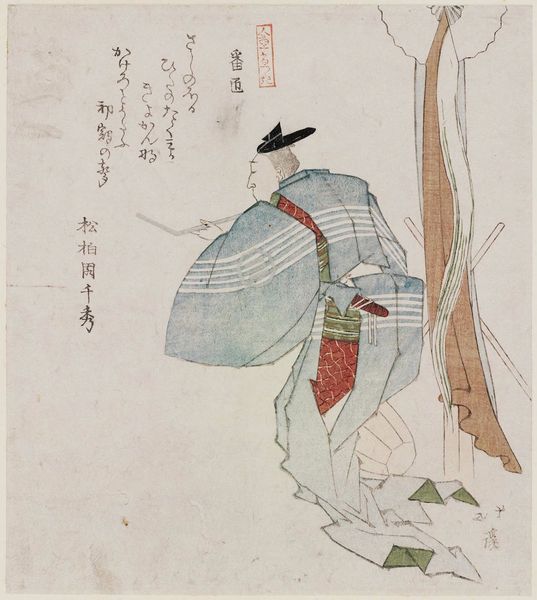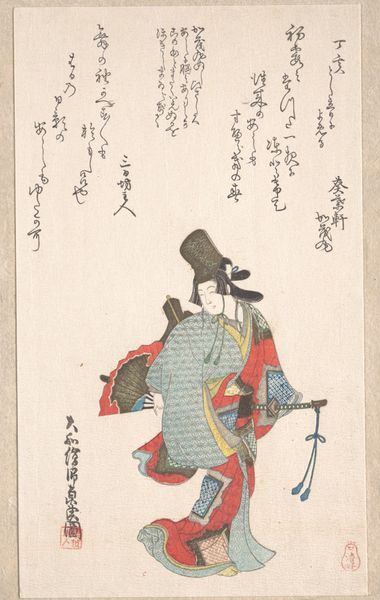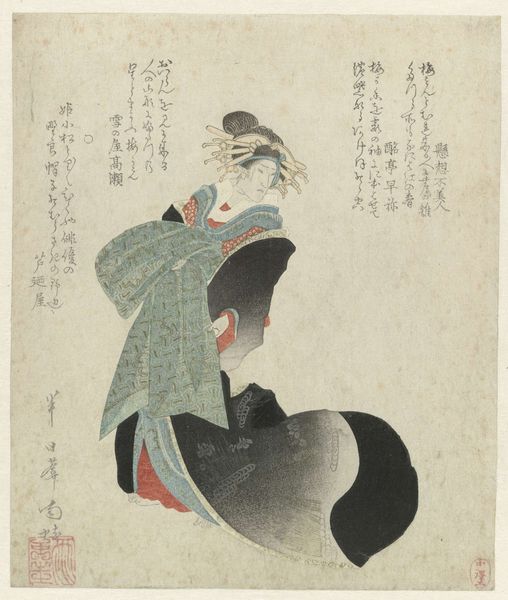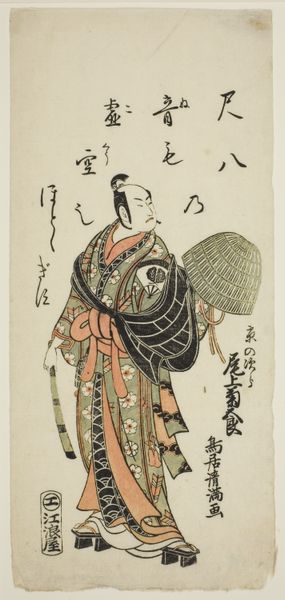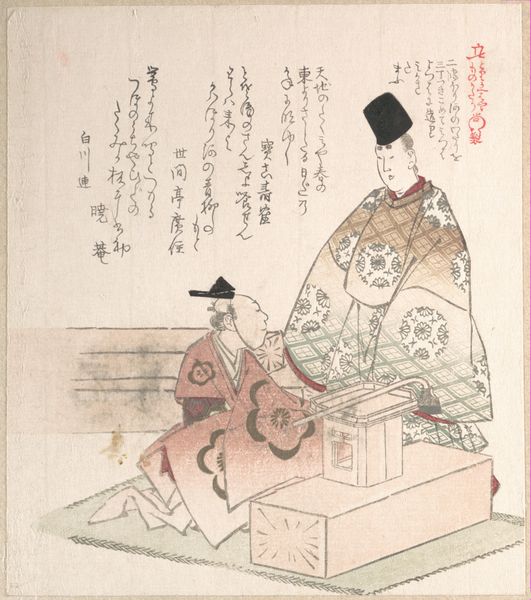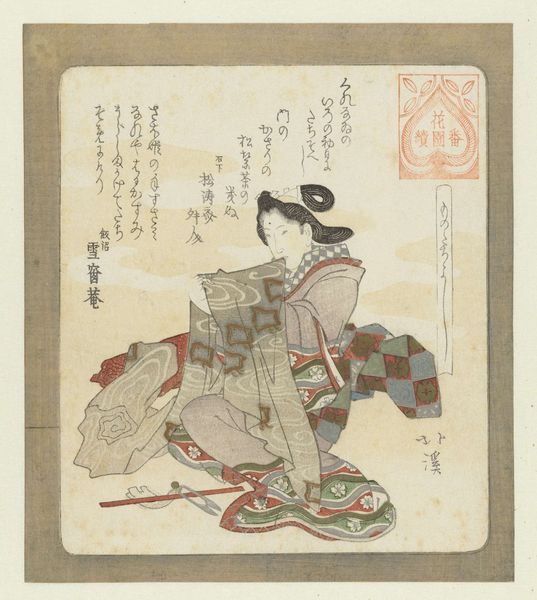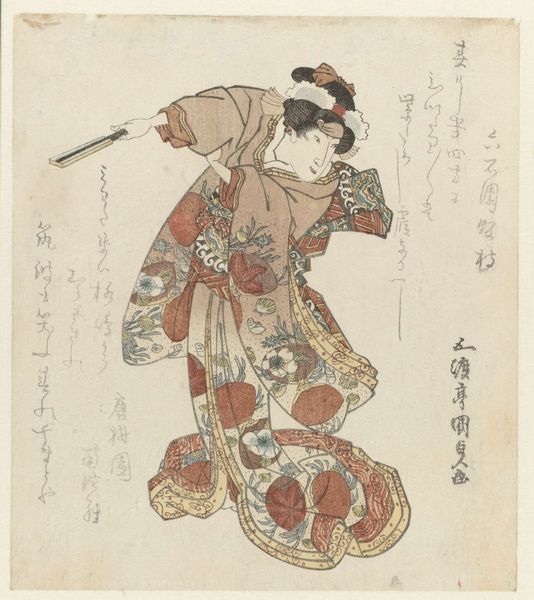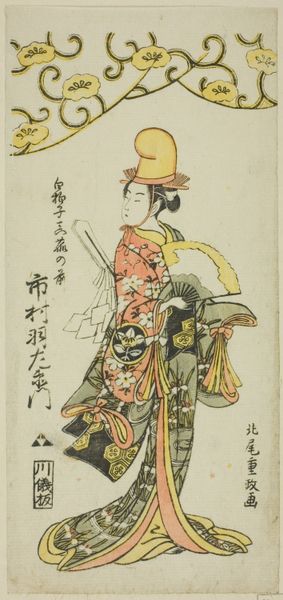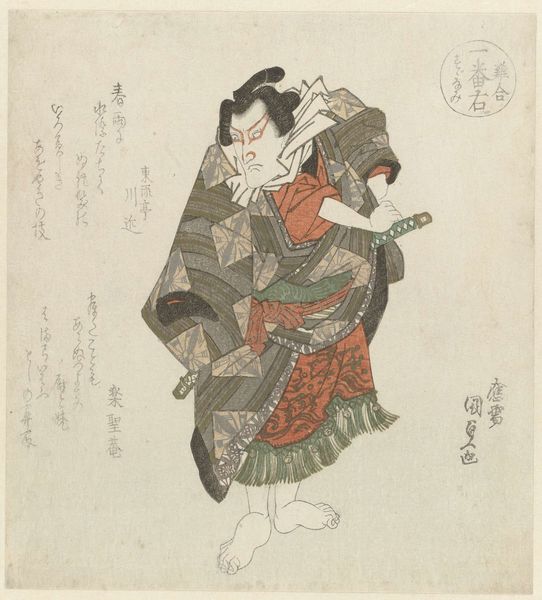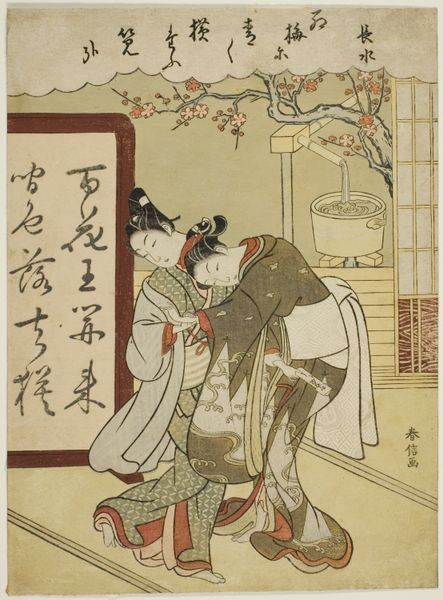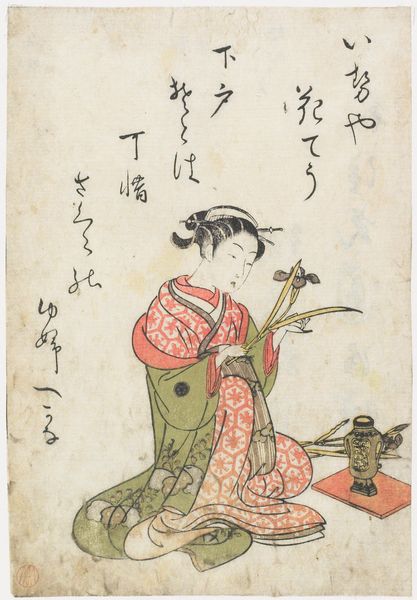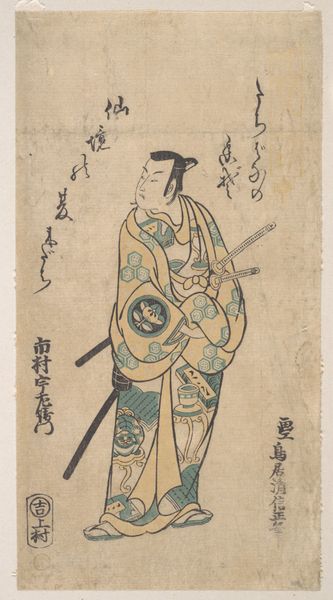
print, woodblock-print
#
portrait
# print
#
asian-art
#
ukiyo-e
#
woodblock-print
Dimensions: height 204 mm, width 178 mm
Copyright: Rijks Museum: Open Domain
Curator: This woodblock print, titled "Bewaker" which translates to "Guard" in English, was created by Totoya Hokkei around 1821. You can find this beautiful ukiyo-e print here at the Rijksmuseum. What’s your initial reaction to this piece? Editor: Immediately, I'm drawn to the quiet dignity of the figure. He seems so self-possessed. The colors are muted, yet rich in their own way, and the lines are so carefully and meticulously applied. I'm wondering about the role and status of a guard within the social context of Japan in the 19th century. Curator: Precisely. Considering its materials – primarily the woodblock and inks – and the processes required to produce a multi-colored print like this, it speaks volumes about labor. The artist would have designed it, but skilled artisans were required for carving the blocks and meticulously printing each layer. Did this type of print serve more of a function in a home? Editor: Yes, absolutely. Ukiyo-e prints were part of the cultural landscape; affordable art available to the merchant classes. They offered glimpses into theater, fashion, and daily life, circulating stories and visual ideals. In a society with stringent class boundaries, art like this crossed many different demographics. Curator: Which raises an interesting question about art as commodity. Were these prints valued more for their artistic merit or their practical function as decorative items or forms of news dissemination? Perhaps Hokkei’s success hinges on striking a balance; a print appealing aesthetically and practically. Editor: It’s a tricky balance to strike. The scale of production and consumption of these prints tells us so much about the commercialization of art at the time, which is fascinating in itself. The themes present within the artwork reflected on societal issues of the time, while these artworks were created as commercial products in workshops utilizing craft labor. Curator: And to think, such labor resulted in this seemingly simple yet deeply evocative scene. I find that the attention to material detail brings the image alive to its audience today, allowing it to function as a piece of living history in front of us. Editor: Agreed. Hokkei captured not just an image but a social and economic dynamic of the time, skillfully carved into a block and forever pressed on paper.
Comments
No comments
Be the first to comment and join the conversation on the ultimate creative platform.
